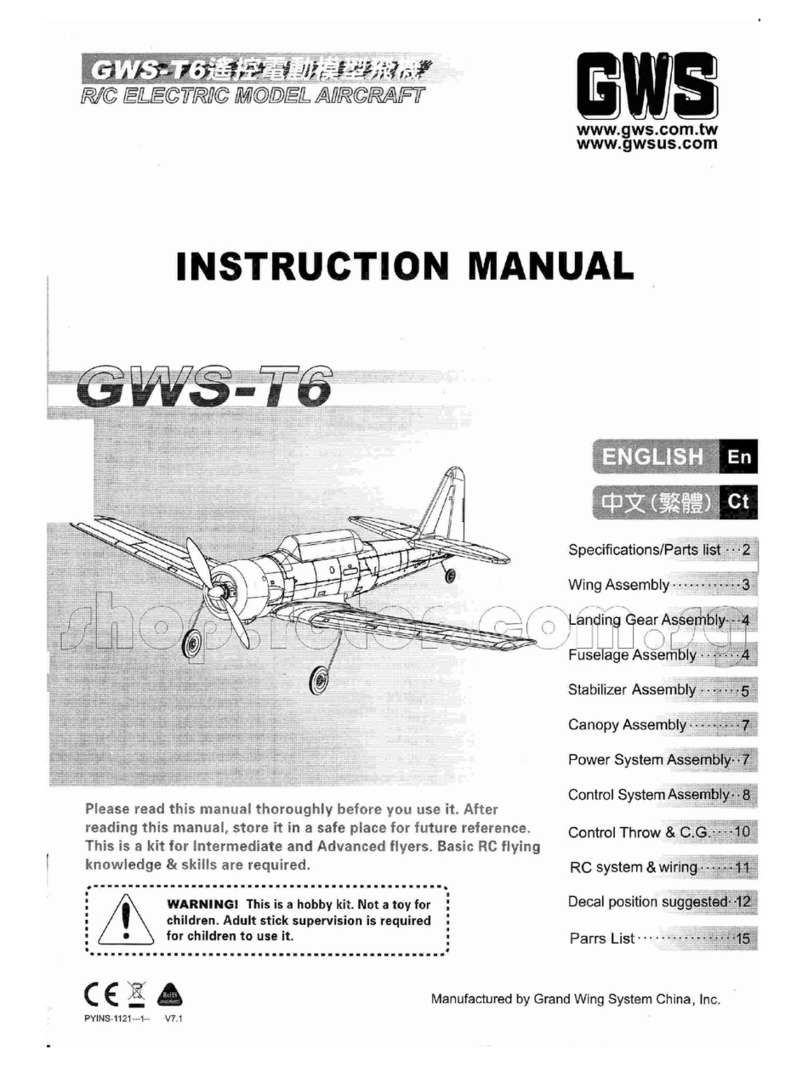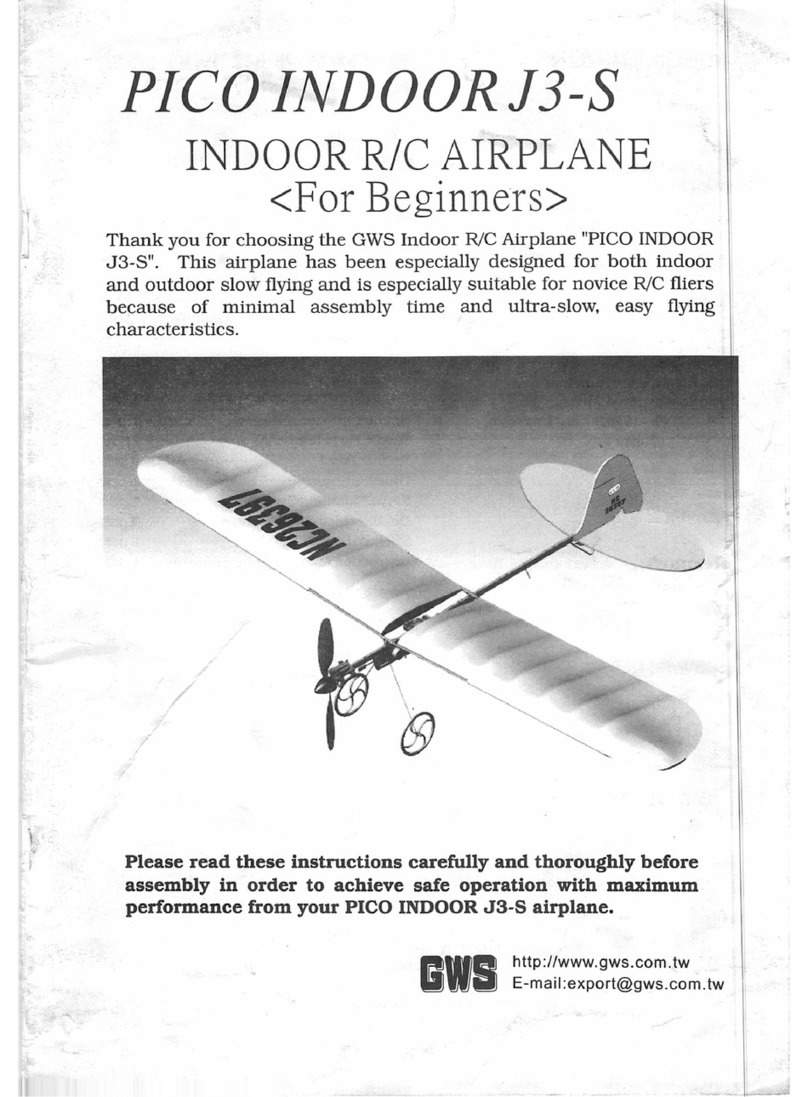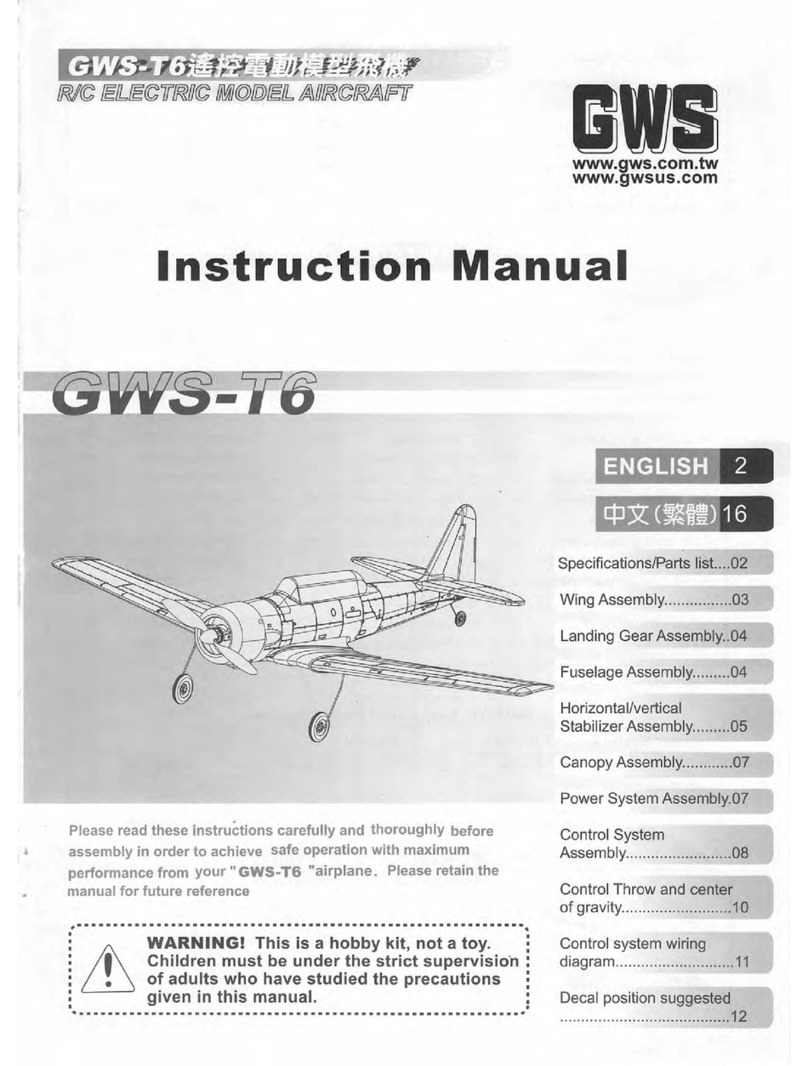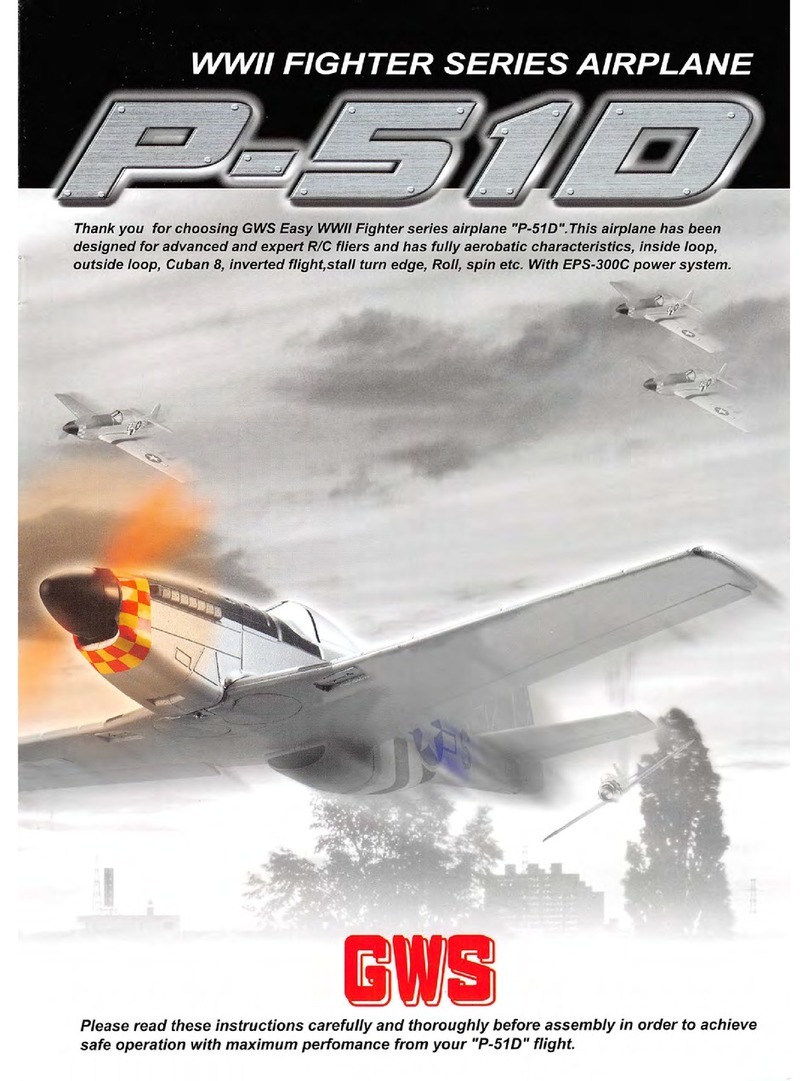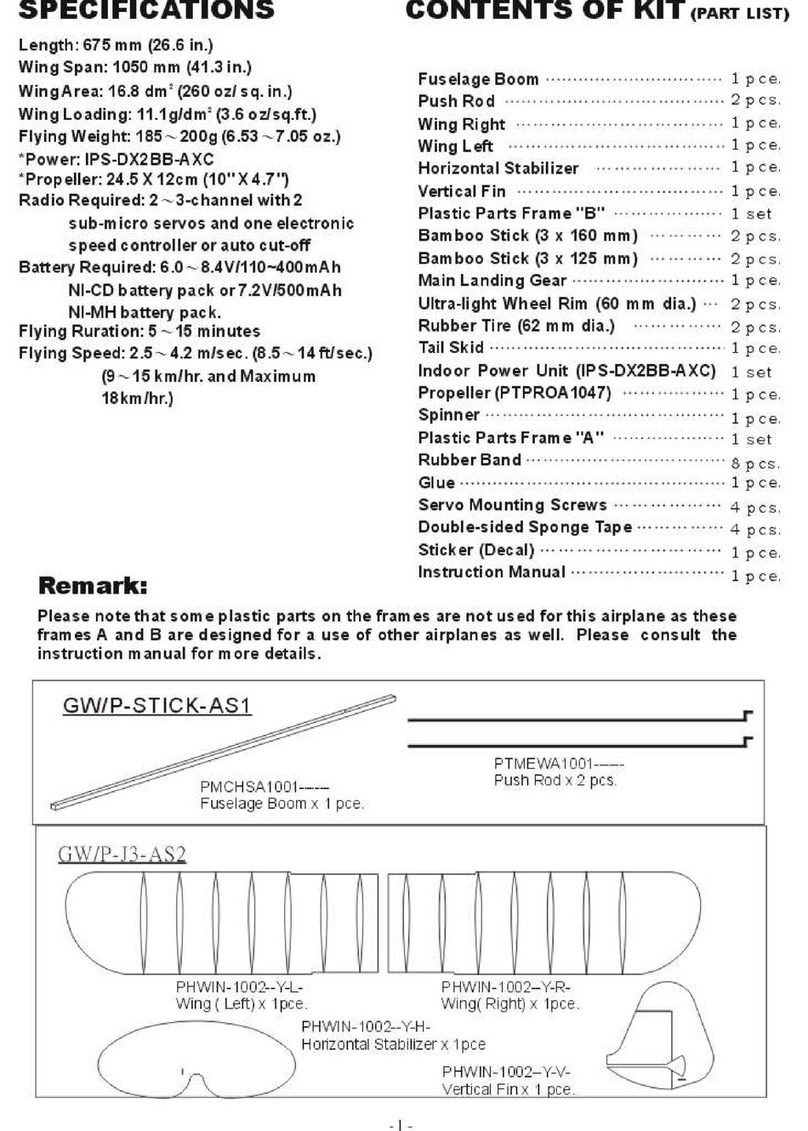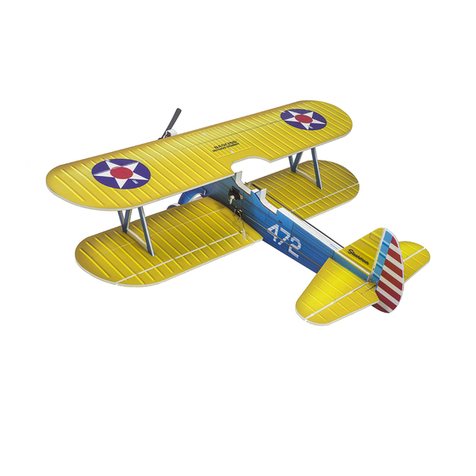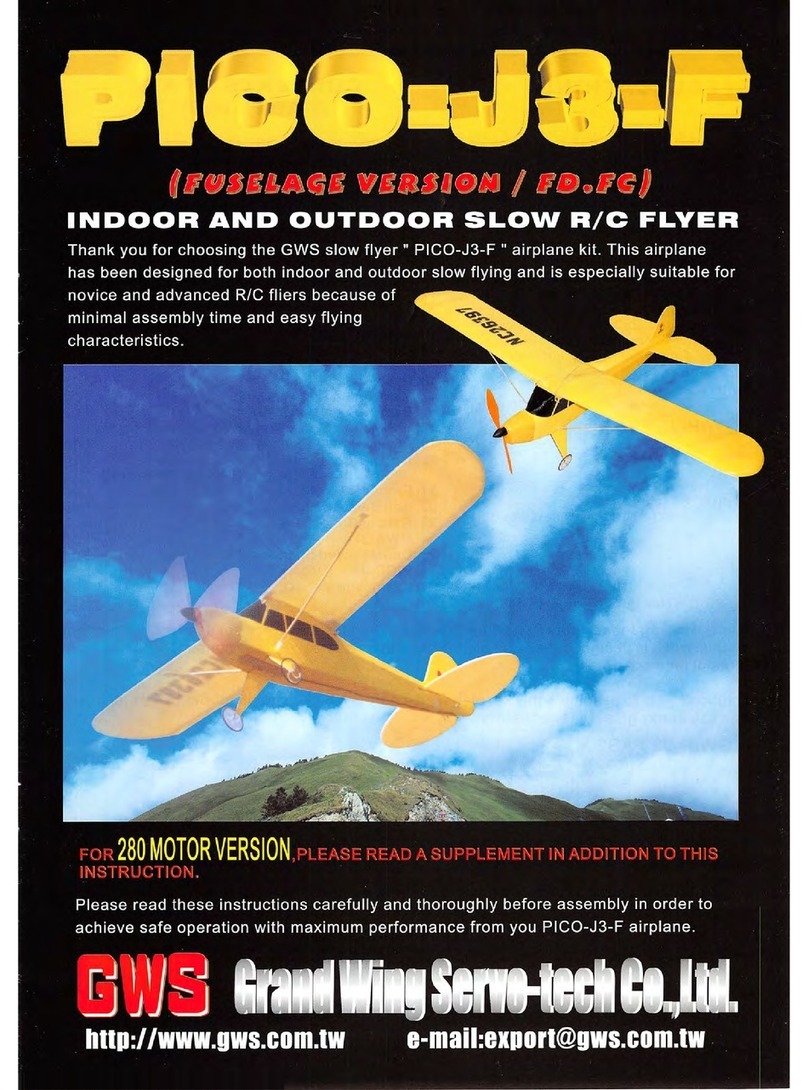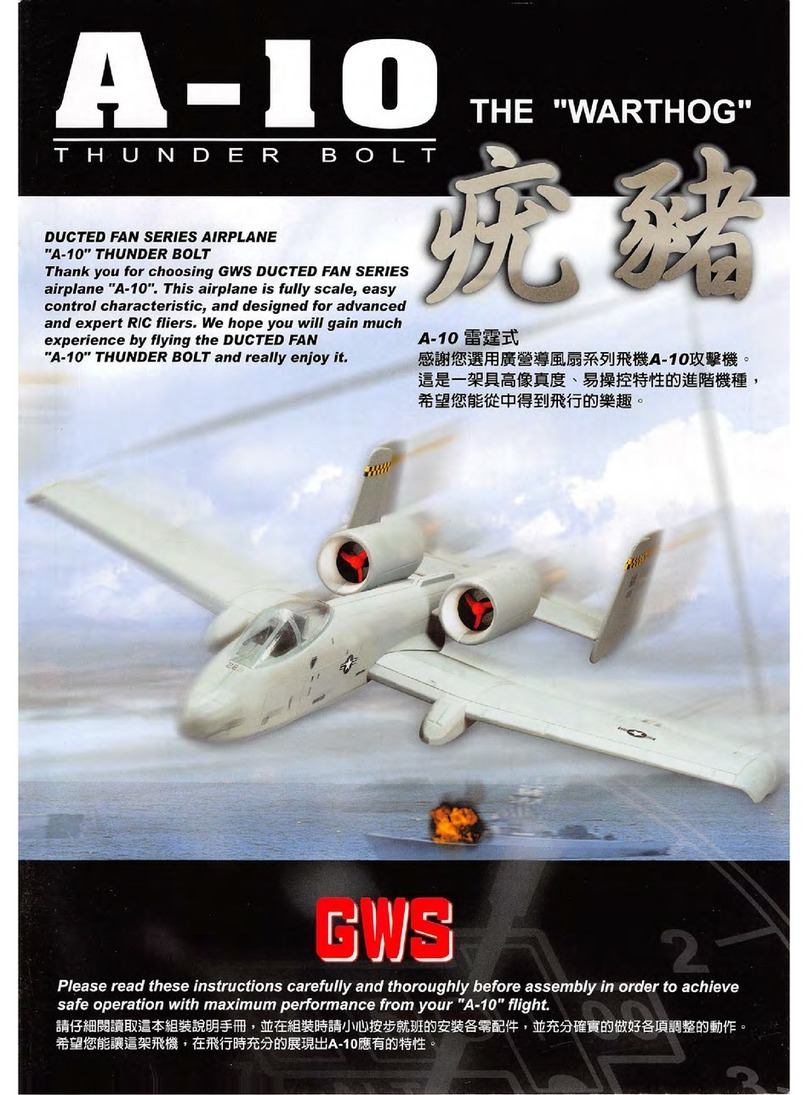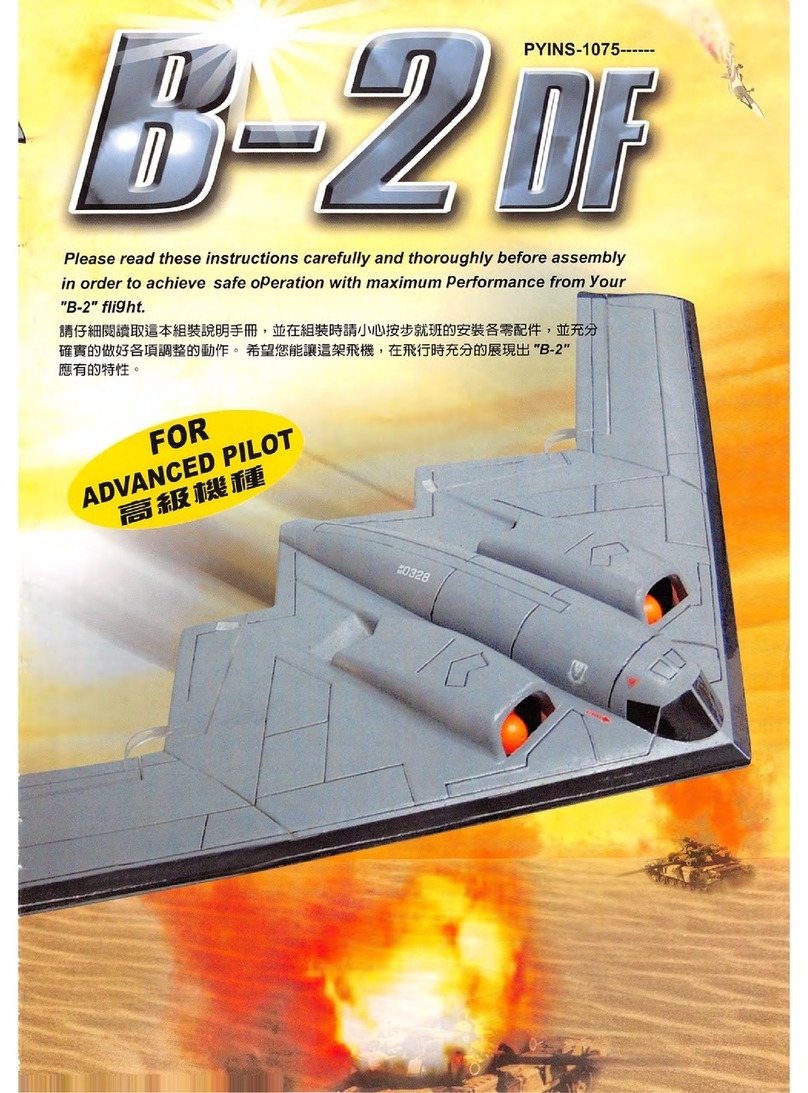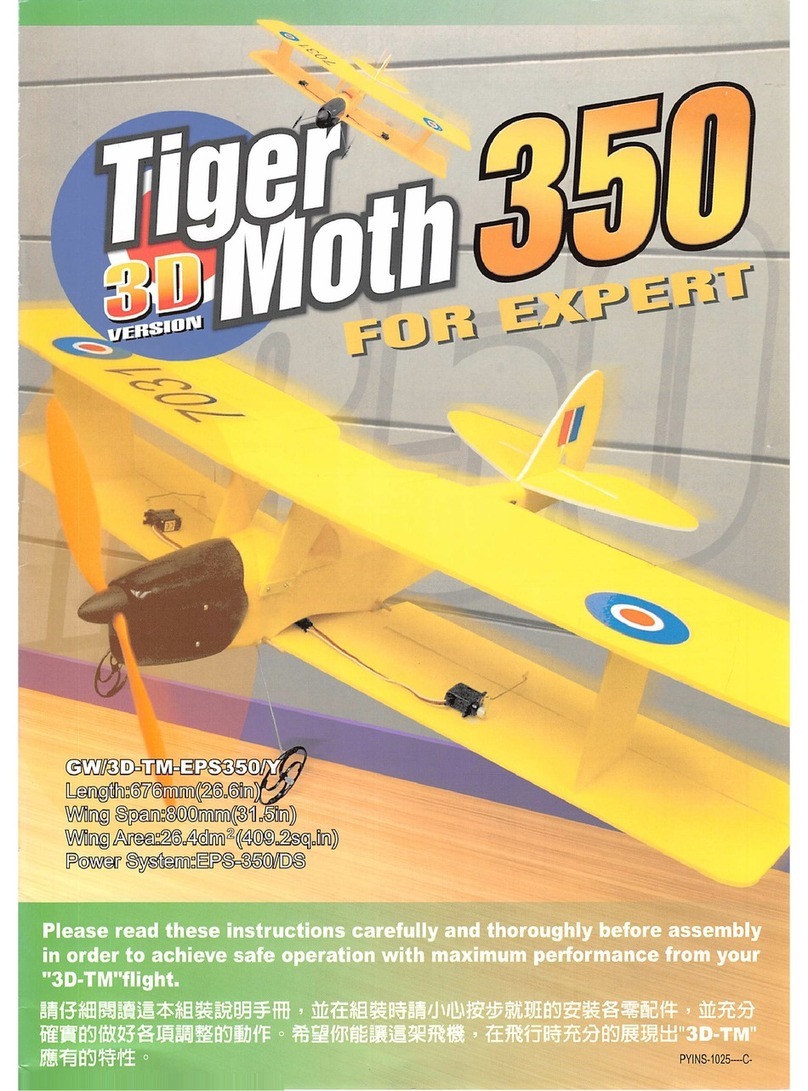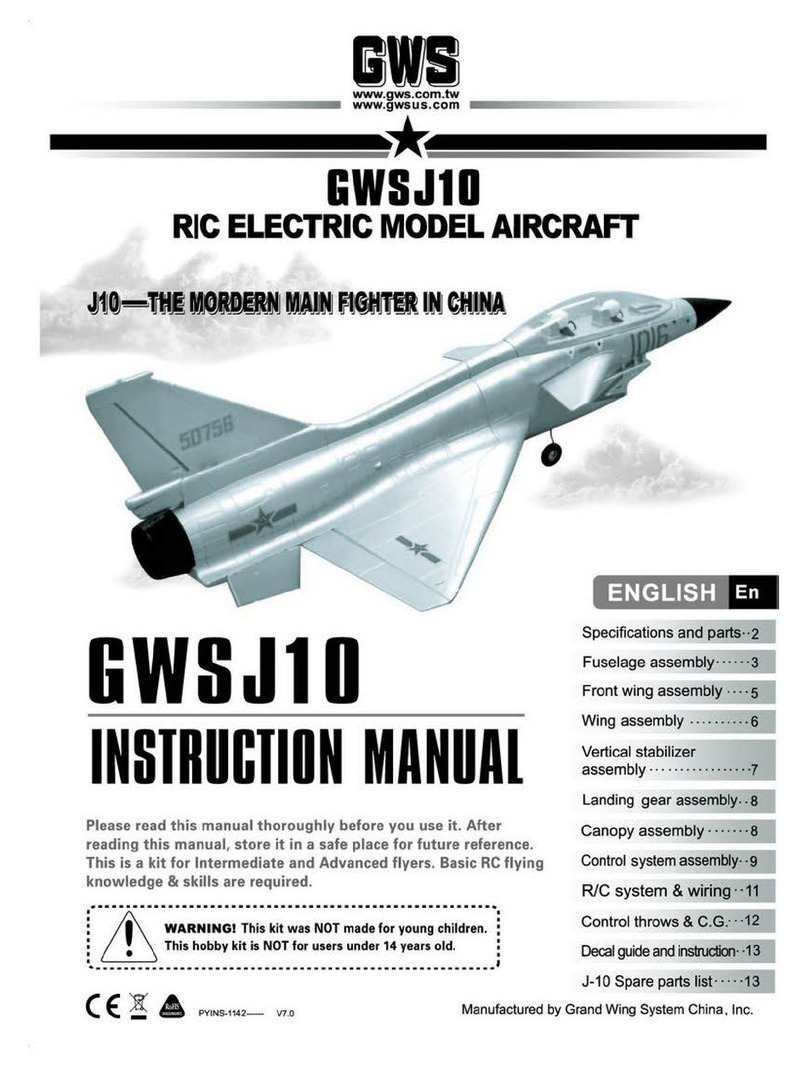£^s7:4/fr£/f
RJC
ELECTRIC
AIRCRAFT
Step2
Apply epoxy glue to the
slot of fuselage,then put
the C (6) in place.
FUSELAGE
ASSEMBLY
Press
the
3mm
hexagonal
nut
into
the
plastic
c
(6) and apply a small amount of CA glue to the
c{6).
Frame"C"
Step1
230mm 230mm
460mm
PlasticPush RodTube(Transparent)
3^x
460 mm
A Cut the plastic tube to specific length
as
shown in the picture (230mm x 2).
Glue the tube in place with
GWS glue. Insert the plastic pushtod tube (230mm)
into the hole,from inside of the fuselage
and
come
out for approximately 10mm.
Drill
3mm holes into the L& Rfuselage
pushrod guide slot.
For bigger servo, please cut
the red portion on fuselage.
i
^i ^
[r.avoSDmAh {
Bra
•
For bigger batteries,
please
cut the red portion.
/S glue at the indicated area.
Tastercure time, you may use a 6-
'minute epoxy instead ofthe included glue.
I
Step3
Once glued, fixin places in 5 or 6 position using either a very low
tach masking tape and secure with tape that
does
not come in contact
with the painted foam.






